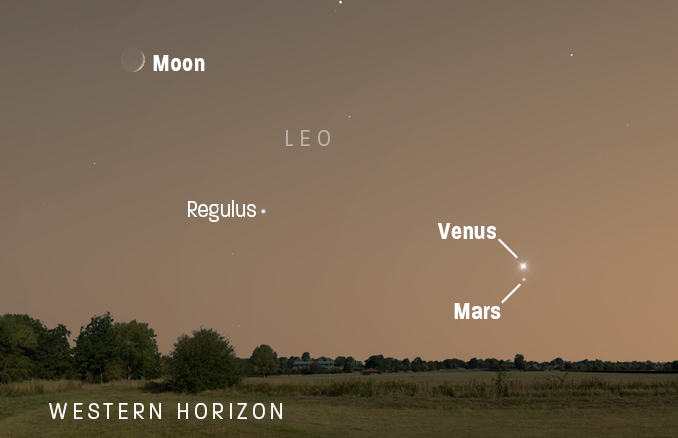
Soon after sunset on Monday (12 July) there’s an opportunity to see a close encounter between Venus and Mars, with a crescent Moon nearby. The planets get closer the following night but the Moon has moved away.
To witness this planetary conjunction, you’ll need to find yourself a decent view over the western horizon around to the west-north-west, and hope that the sky is clear in this direction. If you’re unsure in what direction to face, look for an azimuth reading of around 282 degrees on your compass or the compass app on your smartphone.
Venus, blazing away at magnitude –3.9, totally surpasses the red planet, which is nearing the end of its long evening appearance and shines comparatively feebly at magnitude +1.8.
A young, thin-phase crescent Moon is on the scene too on 12 July, making for a very picturesque, if lowly, scene over the western horizon. Though Venus and the Moon should both be quite easy to spot, seeing Mars will provide a bigger hurdle despite Venus being a great marker. Having a pair of binoculars handy is a wise choice in case of haze or thin cloud.
Remember, NEVER sweep for any astronomical body lying close to the Sun with binoculars or a telescope until you are absolutely certain that the Sun is still below the horizon or has set.
On 12 July at sunset (which occurs at about 9.15pm BST from London, at 9.32pm from Manchester and at 9.52pm from Edinburgh), the pair lie between around 10 and 11 degrees up and are separated by around 37 arcseconds, with Venus located north of Mars. The crescent Moon lies just under five degrees above and to the left (north and east) of the pair. On the following evening, the planets lie slightly closer together, just under half a degree apart.
